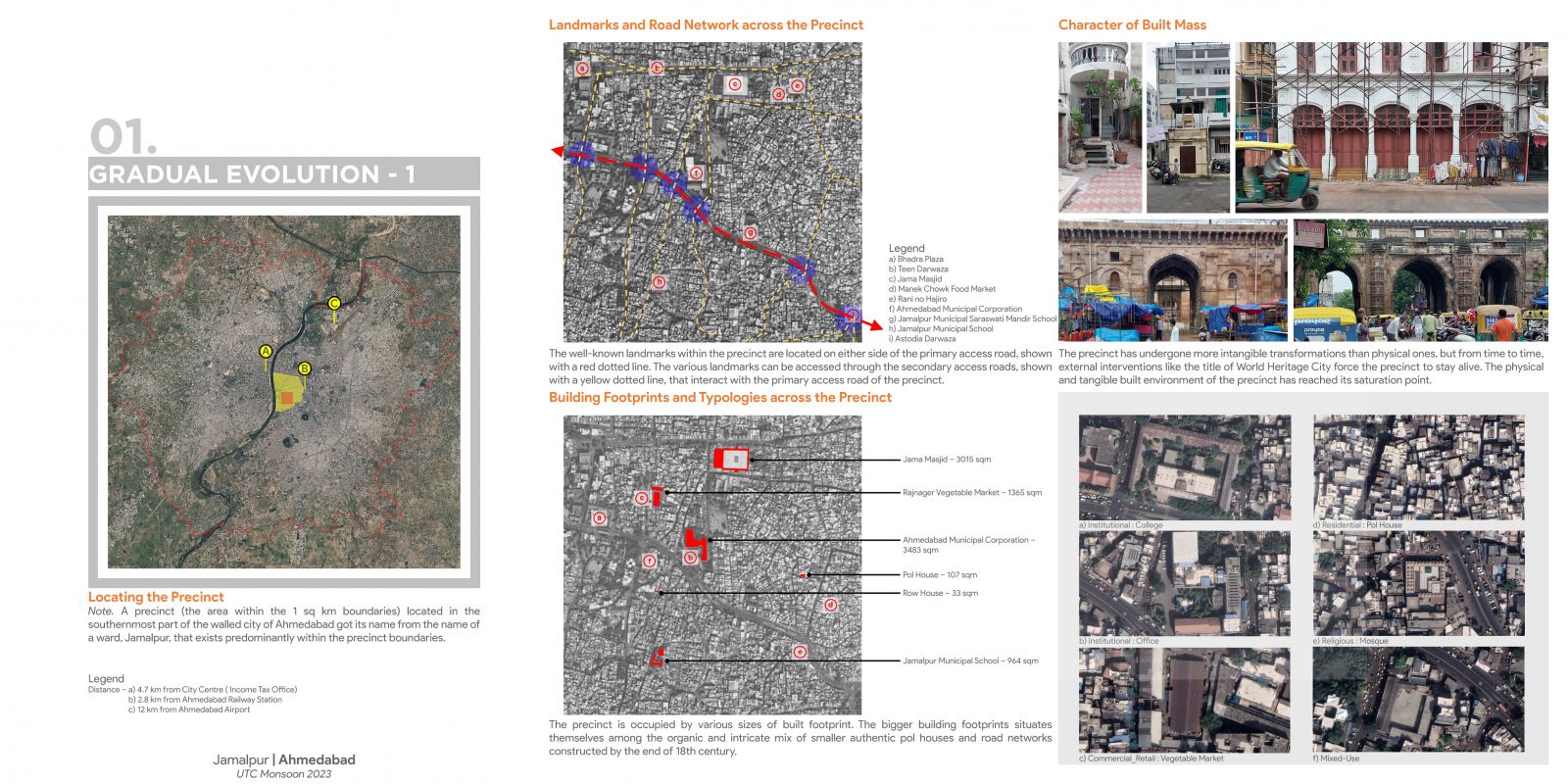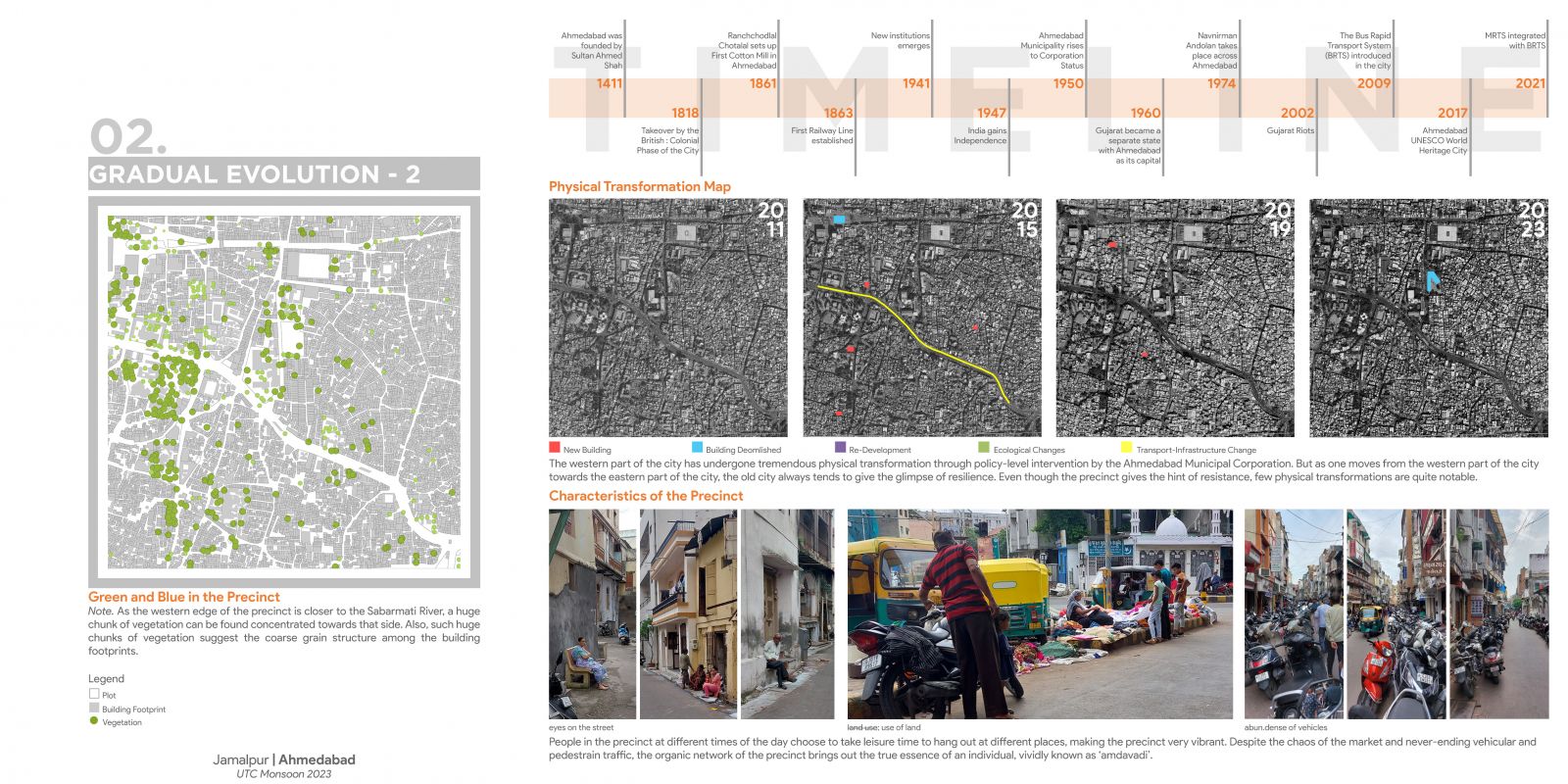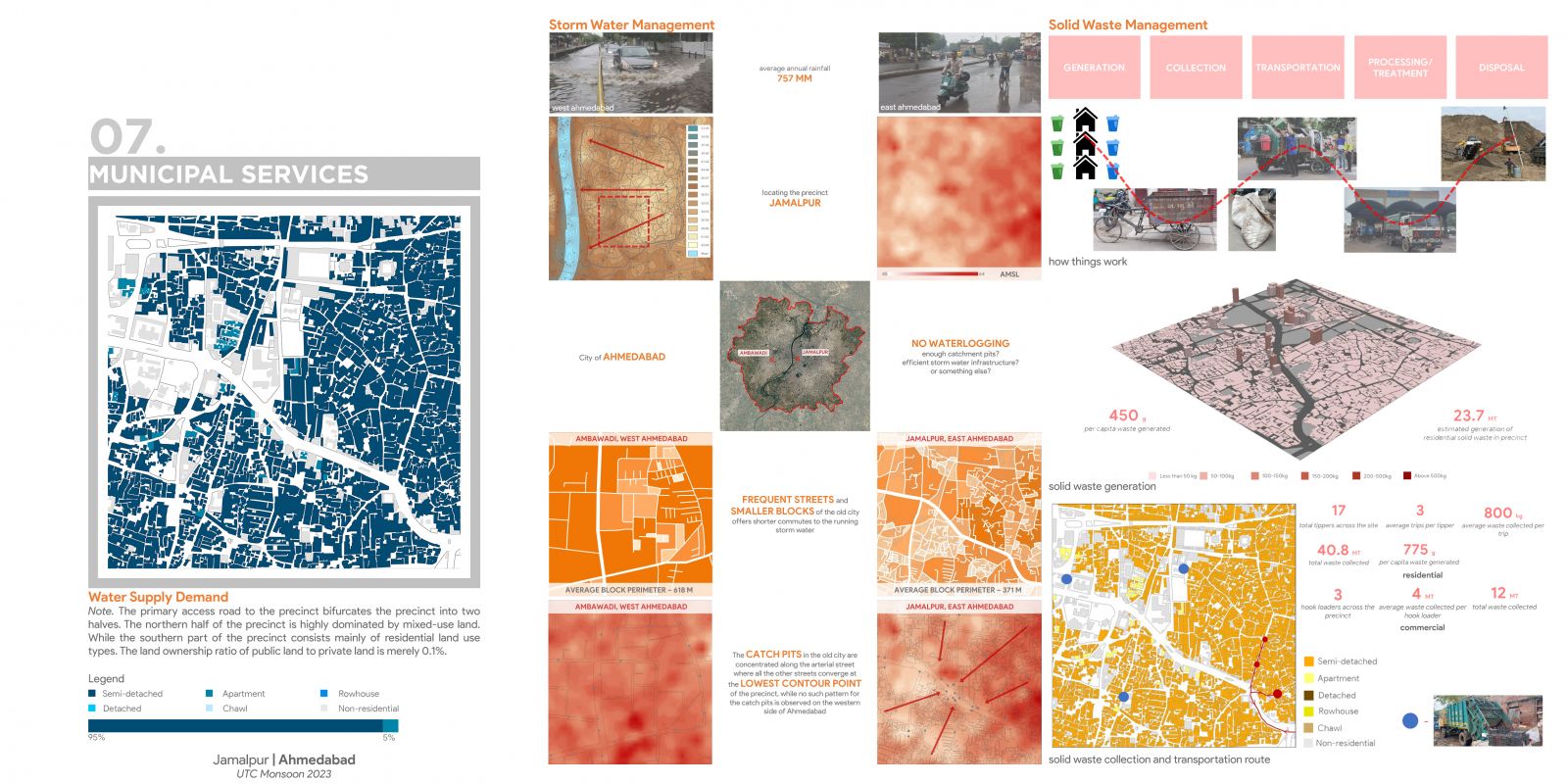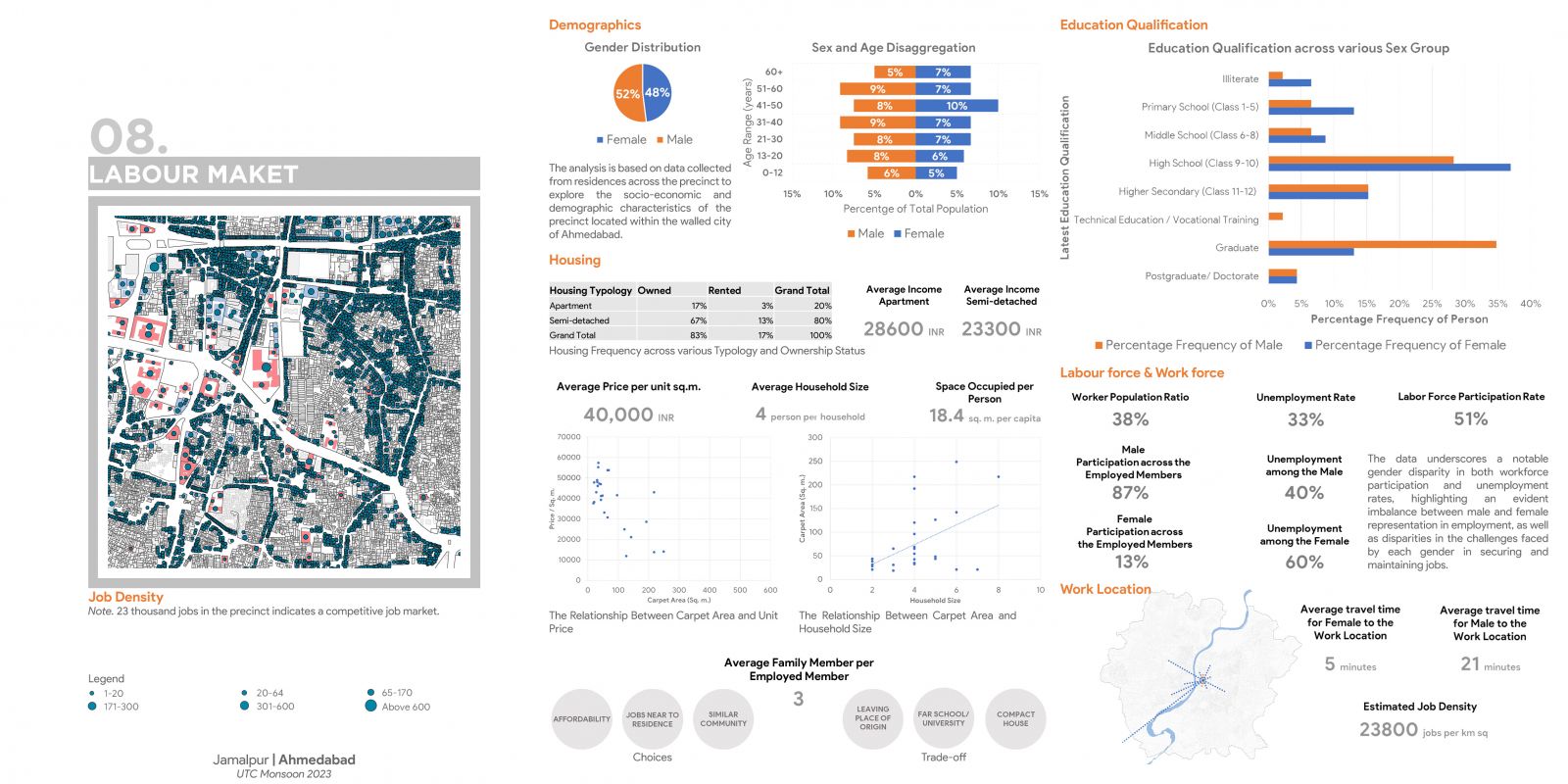Your browser is out-of-date!
For a richer surfing experience on our website, please update your browser. Update my browser now!
For a richer surfing experience on our website, please update your browser. Update my browser now!
Jamalpur's evolution reflects the delicate interplay between historical preservation and modernization. The 2002 riots reshaped community dynamics, resulting in changes and segregation. The World Heritage City designation brought varied building typologies, increased commercialization, and parking challenges. Heritage sites coexist with markets and diverse residential buildings. Despite shifts, historical value and limited open space temper development, revealing a gradual evolutionary process. The intricate street network, inconsistent widths, and signage issues impede traffic flow, affecting precinct connectivity. Land use trends, predominantly residential with a shift to mixed-use, showcase adaptability amid resilience, emphasizing the challenge of balancing historical legacy with urban evolution. Notably, gender disparities in jobs call for efforts to bridge the gap, fostering more equitable economies, societies, and happier families. The coexistence of informal practices and formal infrastructure seamlessly blends tradition with progress, reflecting the city's unique charm.








